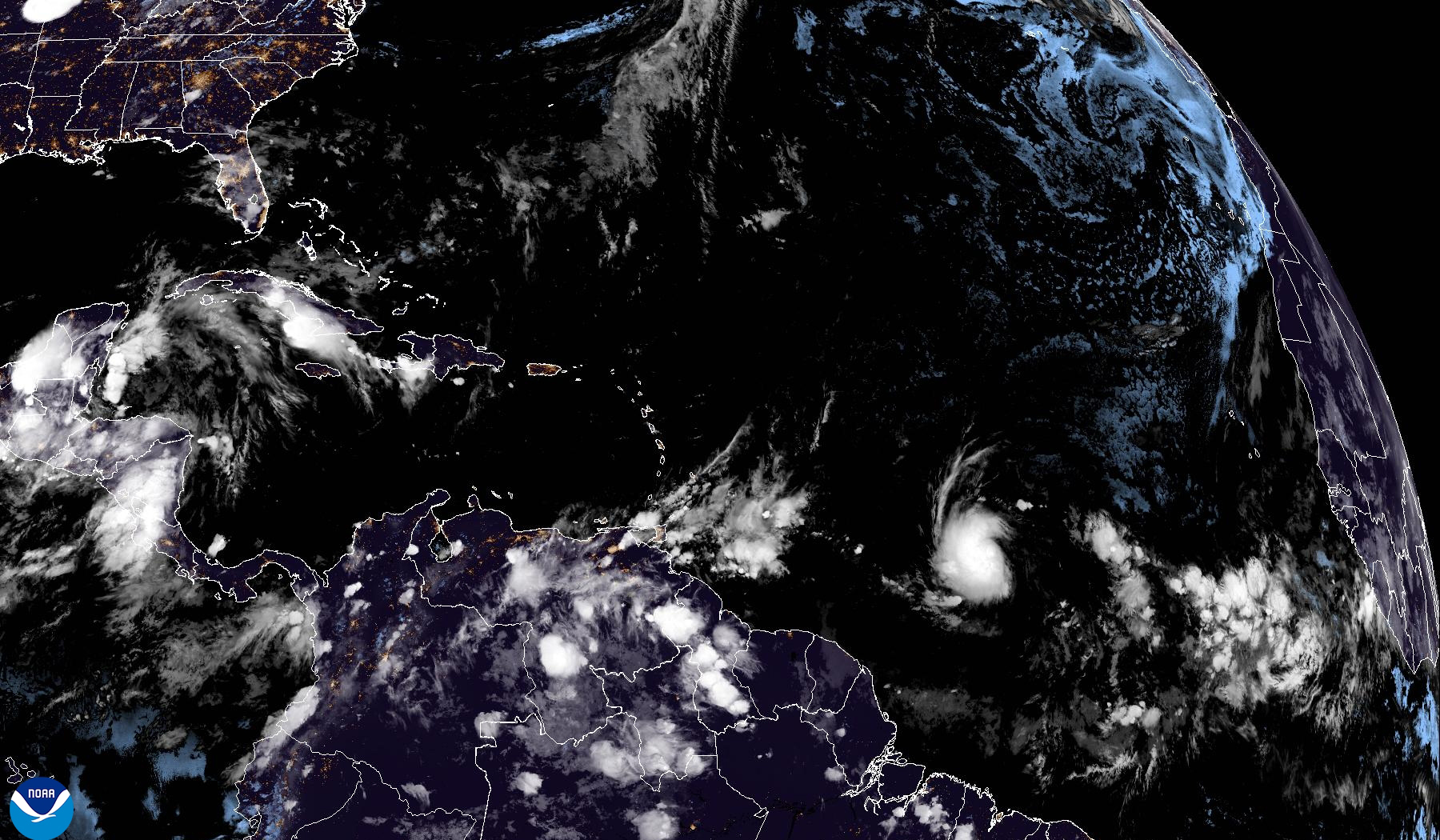National Hurricane Center’s Monitoring and Forecasting

National hurricane center beryl – The National Hurricane Center (NHC) is responsible for monitoring and forecasting hurricanes in the Atlantic and eastern Pacific Ocean basins. The NHC uses a variety of tools and technologies to track and predict hurricane activity, including:
- Satellite imagery
- Aircraft reconnaissance
- Buoy data
- Computer models
The NHC issues hurricane watches and warnings to alert the public of potential or imminent hurricane threats. A hurricane watch means that hurricane conditions are possible within the specified area, generally within 48 hours. A hurricane warning means that hurricane conditions are expected within the specified area, usually within 36 hours.
National Hurricane Center Beryl dey watchin’ Beryl close close. Beryl projected path go tell we where e go pass and how strong e go be. Check out the projected path here to know where Beryl go dey. National Hurricane Center Beryl go keep we updated with the latest on Beryl.
Process of Issuing Hurricane Watches and Warnings
The NHC issues hurricane watches and warnings based on the following criteria:
- The intensity of the hurricane
- The track of the hurricane
- The expected impact of the hurricane
The NHC uses a variety of tools and technologies to forecast the intensity and track of hurricanes. These tools include:
- Computer models
- Satellite imagery
- Aircraft reconnaissance
- Buoy data
The NHC also uses a variety of tools and technologies to assess the expected impact of hurricanes. These tools include:
- Storm surge models
- Rainfall models
- Wind speed models
The NHC issues hurricane watches and warnings to give the public time to prepare for the hurricane. It is important to follow the instructions of local officials and to take precautions to stay safe during a hurricane.
National Hurricane Center Beryl is monitoring the progress of Tropical Storm Beryl closely. For the latest information on the storm’s path and intensity, including spaghetti models, please visit tropical storm beryl spaghetti models. The National Hurricane Center will continue to provide updates as the storm progresses.
Hurricane Beryl’s Path and Impact

Hurricane Beryl emerged as a tropical storm on July 4th, 2023, over the western Atlantic Ocean. It gradually intensified, reaching hurricane status on July 6th. Beryl’s path took it across the open ocean, posing no immediate threat to landmasses. However, it brought heavy rainfall and gusty winds to Bermuda and the Azores as it passed by.
On July 9th, Beryl began to weaken as it approached the cooler waters of the North Atlantic. It eventually transitioned into a post-tropical cyclone on July 11th and dissipated shortly after.
Areas Affected by Beryl
Although Beryl did not make landfall, its effects were felt in several areas:
- Bermuda: Beryl passed about 100 miles to the southwest of Bermuda, bringing heavy rainfall and sustained winds of up to 50 mph. The island experienced power outages and some minor flooding.
- Azores: Beryl also passed near the Azores, causing similar impacts. Winds reached speeds of up to 45 mph, and rainfall led to localized flooding.
Impact on Infrastructure, Property, and Human Life, National hurricane center beryl
The impact of Hurricane Beryl was relatively minor, given its distance from land. However, the storm still caused some damage:
- Infrastructure: Power outages and downed trees were reported in Bermuda and the Azores. Some roads were also closed due to flooding.
- Property: A few homes and businesses sustained minor damage from wind and rain.
- Human Life: There were no reported injuries or fatalities related to Hurricane Beryl.
NHC’s Response and Recovery Efforts: National Hurricane Center Beryl

The National Hurricane Center (NHC) plays a pivotal role in coordinating response and recovery efforts following Hurricane Beryl’s impact. As the primary federal agency responsible for tracking and forecasting tropical cyclones, the NHC works closely with numerous agencies and organizations to ensure a swift and effective response.
Upon the issuance of a hurricane warning, the NHC activates its Emergency Operations Center (EOC), which serves as the central hub for coordinating response activities. The EOC is staffed by a team of meteorologists, hydrologists, and emergency managers who work around the clock to monitor the storm’s progress and provide real-time updates to government agencies, emergency responders, and the public.
Collaboration with Partner Agencies
The NHC collaborates with a wide range of agencies and organizations to provide aid and assistance to affected communities. These include:
- Federal Emergency Management Agency (FEMA)
- National Weather Service (NWS)
- National Oceanic and Atmospheric Administration (NOAA)
- American Red Cross
- Salvation Army
Each agency has specific responsibilities in the response and recovery process, such as providing disaster relief funds, distributing food and water, and offering medical assistance. The NHC works closely with these agencies to ensure that resources are allocated effectively and that affected communities receive the support they need.
Effectiveness of Response Efforts
The NHC’s response and recovery efforts have been generally effective in mitigating the impact of Hurricane Beryl. The timely issuance of warnings and advisories allowed communities to prepare for the storm and take necessary precautions. The coordination with partner agencies ensured that resources were deployed quickly and efficiently to affected areas.
However, there is always room for improvement. One area that could be strengthened is communication with local officials and emergency responders. During Hurricane Beryl, there were some instances where communication breakdowns occurred, which hindered the coordination of response efforts. The NHC is working to improve communication channels and protocols to ensure that critical information is shared quickly and effectively in the future.